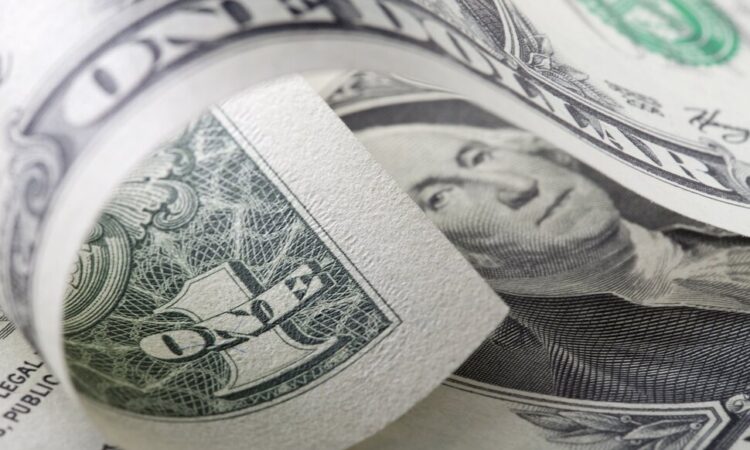
Investors worried that U.S. stocks could tumble after their long climb have plenty of alternatives. There are foreign stocks, of course, bonds, real estate investment trusts – all sorts of things.
And then there is the dollar. After skidding through the first eight months of 2017, it’s finally on the rise. The U.S. Dollar index is up about 3.4 percent since Sept. 8.
The index measures the value of the dollar against a “basket” of major currencies – the euro, Japanese yen, British pound, Canadian dollar, Swedish krona and Swiss franc.
If a 3.4 percent gain doesn’t sound like much, remember that the idea is to buy low, before a rebound gathers steam. The index is still about 8 percent below its peak last December.
So the question for investors: Is the turnaround since early September the start of a serious rally? And if you think so, how do you get in on the action?
“The U.S. Dollar index has been on a strengthening trend, setting higher lows since the beginning of September,” says Josh Green, head trader at GPS Capital Markets in Salt Lake City. He expects the dollar to continue to rise through 2018, given improving economic reports in the U.S. and low interest rates overseas that make many other currencies too stingy to hold.
“Jobs data and wage growth out of the U.S. is as healthy as it has ever been, so with the economy on a firm footing the [U.S. Federal Reserve] has turned hawkish and is on track with an 80 percent chance of raising interest rates one more time this year and two or three times in 2018,” Green says. “All of this bodes well for the U.S. dollar in keeping the strengthening trend alive.”
Higher interest rates and a strong economy increase the demand for the dollar, causing it to rise in value against other currencies.
But betting on the dollar can be risky, as it tends to lose value over the long term rather than gain, says Edward P. Stringham, president of the American Institute for Economic Research.
“While it remains to be seen what will happen to the specific value of the dollar over the next year, the [U.S. Federal Reserve] has a fairly established record of increasing the money supply and decreasing the value of the dollar over the long run,” Stringham says. “A dollar was defined as 1/20th of an ounce of gold up until 1934 and now a dollar buys 1/1,200th of an ounce. People with assets or pensions tied up in dollars see their savings or retirement whittled away.”
The gradual fall of the dollar means it’s hazardous to keep too much in assets like bank savings for the long term. But the currency markets are huge, involving trillions in trades every day, so there must be plenty of traders who find currency bets worthwhile.
Chances are that anyone who’s profited on the dollar – or any other currency, for that matter – has done it with successful short-term bets, not the kind of buy-and-hold strategy many retirement investors are accustomed to using. Currencies are notoriously volatile, so speculators make money by getting the timing right, not by riding a long-term market rise as with stocks.
Experts typically tell amateurs not to bet big on currency fluctuations. Foreign exchange markets are unpredictable and governed by forces very different from those driving ordinary stocks and bonds. If you are a mutual fund investor, expect currency bets to take a lot of learning, and much more work and risk than you’re used to. As with any unfamiliar asset, it’s best to start with small sums you can afford to lose.
Also, currency traders typically specialize, so you’d need to decide whether to bet on the dollar versus the euro, yen or some other pairing, like the euro versus the yen. Tracking all the major currency pairs is just too complicated, and minor currencies can be whipsawed by political and economic turmoil, lack of transparency and other issues that can leap out of the dark.
The most direct way to bet on exchange rates is through the forex, or foreign currency market, using futures contracts that pair two currencies.
Futures contracts obligate the user to buy or sell a given quantity of a currency, stock or commodity at a set price on a specified date. But most speculators instead buy and sell the contracts before that date arrives. A currency contract, for example, would become more valuable if exchange rates change as you had hoped, and vice versa.
There are foreign currency exchange tutorials on the internet. Potential investors are quickly warned that the action is very fast and requires a lot of attention and the ability to make quick decisions and bear sizeable losses if things don’t go your way immediately.
There also are actively managed mutual funds that bet on securities, so see what your own mutual fund family has to offer.
But currency investing has become easier with the introduction of exchange-traded funds focused on various currency pairs. Because ETFs are traded like stocks, investors are not limited to betting their chosen currency will rise. By shorting or buying put options on these ETFs, you can also bet the currency will fall.
Note that some ETFs use leverage to amplify gains and losses, and some come in twos designed for traders who expect their currency to rise one day, fall another. With these more exotic products, long-term performance data can be deceiving. They’re made for quick trades in and out, and profiting on very small market moves.
As mentioned above, much depends on economic trends and central bankers’ decisions about raising and lowering interest rates. The dollar is benefiting, in part, from the low-rate policies of many major central banks outside the U.S.
And future policies of the Federal Reserve are far from certain. Currency traders live and die by speculation on what the Fed will do and when, and even if the Fed continues to raise rates, the currency markets could be jolted if it does it faster or slower than expected. Also, the Fed is soon to get a new chairman.
“In recent years the Fed has increased its balance sheet and, by paying interest on reserves [banks deposit with the Fed], the Federal Reserve is paying banks to not lend to individuals and businesses,” Stringham says.
“If the amount of new money the Fed has created goes into circulation, that could lead to the dollar becoming even less valuable,” he says. “What worries me most is everyone in society can be affected in a very negative way by untested experiments of the chairman of the Fed.”
Top Funds to Track Stock Market Volatility
|
|||
|
|||
|
|||
|
|||
|
|||
|
|||
|
|||
|
|||
|
|||
|
Stock information as of November 14th, 2017




